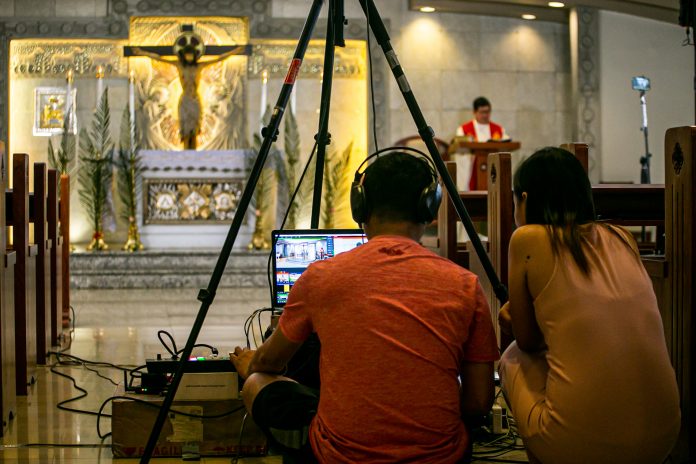My internship period during college would be one of my most memorable moments when I was a student. For the second phase of my training, I was endorsed to a diocesan media office to do some kind of public relations work.
The tasks included turning on the lights in the office an hour before the superiors arrive. I would fetch bundles of newspapers at the concierge, scan its pages to see if there’s any article that makes mention of the diocese or the bishop. Watch TV and do the same.
The term “social communications ministry” still sounds strange to me. The diocese refers to my place of assignment as the Archdiocesan Office of Communications, or simply the “media office.”
Today, the Catholic Church marks World Communications Day. It was established by Pope Paul VI in 1967 as an annual celebration that encourages everyone to reflect on the opportunities and challenges that the modern means of social communication afford the Church to communicate the Gospel message.
Since I got involved in communications I made it a habit to check the news first thing in the morning, and then my inbox. Last month, I was surprised by a colleague who sent me a link to a “freedom wall” where church workers, including those involved in communications, express their sentiments anonymously.
What took my attention was one observation how social communications ministries compare their equipment and technical knowledge. I know how volunteers feel during their “coverage” or when doing “production.” But what I am more concerned about is how they try to advance their communications strategies.
The story of Mary and Martha suddenly came to my mind.
As the Gospel writer tells us, Jesus came to visit his friends Martha and Mary. Mary preferred to listen to everything Jesus had to say while Martha has been very distracted “by all the preparations that had to be made.”
Jesus, however, told Martha: “You are worried and upset about many things, but only one thing is needed …. Mary has chosen what is better, and it will not be taken away from her.”
The story might not be liturgically aligned with today’s celebration, but the narrative of Mary and Martha is a story that every person in the ministry of social communications have to ponder. Both were undoubtedly delighted upon seeing the Lord. They have done their part in the company of Jesus, but only one got the Lord’s approval.
In Mary, we find the simplicity of a servant who focused on listening to her Master. In Martha, we find a person who preferred to work on everything to present and to accommodate the visitor. Jesus seemed to prefer the behavior of Mary.
In the context of the communications apostolate, “Mary” can refer to the team that is focused on the “only thing needed,” that is, evangelization. “Martha” can refer to people who are obsessive in putting their attention on the “means” rather than on the “purpose of communications.”
This is not to say that we don’t work on the technical aspect of communications, especially these days when we need it most. In fact, churchgoers want better equipment to hear Mass. A survey done by Radio Veritas 846 found that 27 percent of respondents said a good sound system has to be prioritized by churches.
What I put forward, however, is a “purpose-driven way” of communicating. Exerting all our energies to the improvement of production technologies alone would make our endeavours worthless. The late Divine Word priest, Franz Josef-Eilers, noted that this ministry “goes far beyond technologies and ‘media’ as instruments.”
Two months ago, I was invited to be part of the coaching team that trains parish volunteers in the Diocese of Kalookan. On the session for video production, a lady coach asked the participants of the reasons behind producing online shows. “If you do that just to go with the flow, then you just contribute to viral noise,” she said.
One point of reflection is: “What would Christ do using the medium of communications we have?” In areas where social communications teams are active, some ministries focus on “live streaming” of Masses while setting aside issues of social justice, preferential option of the poor, food security and climate emergency.
Let us remember the early Christians who did not have computers, cameras, etc, but were able to communicate the Gospel effectively. They were founded on a single purpose – evangelization. Without it, all their efforts would have been in vain.
In his message for World Communications Day this year, Pope Francis underlines the first words of Jesus to his disciples, “Come and See.” Here he gives the central idea of meeting people in the peripheries to make communication more valuable.
“The challenge that awaits us is to communicate by encountering people, where they are and as they are,” he said.
The work of church social communicators are commendable, but it would be wise to consider asking ourselves why we communicate and for what are we doing this? Who are our communications models — Martha or Mary?
Adrian Banguis-Tambuyat is a young communication practitioner specializing in online content strategy and broadcast journalism. His interests are focused on social justice, youth formation, communication theology and mass media evangelization.









